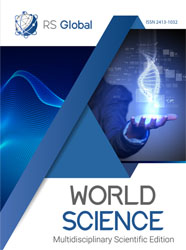РЕАЛИЗАЦИЯ НАВЫКОВ АВТОКОРРЕКЦИИ ЦЕННОСТНОЙ СФЕРЫ ЛИЧНОСТИ С ПОМОЩЬЮ АРТ-ТЕРАПЕВТИЧЕСКОЙ МЕТОДИКИ «EIDEALING»
Abstract
The subject of the research is the assessment of effectiveness of the art- therapeutic method “Eidealing”, which is aimed at mastering the strategy and skills of structural self-analysis of the value sphere and the value images transformation, reference points, their hierarchy and event scenarios. The study revealed the important value inquiries at the participants of the method, both in personal and social aspects, and their transformation over the past 2 years. The result of eidling as a process is a picture harmoniously composed and having a personal meaning, which contributes to the correction of psychological state and to motivation for the autonomous search for sustainable personal decisions, to the extension of mindfulness zones and to the psychological auto-correction skill formation. The personal interpretation of the symbols received allows a person to move into the field of informed decisions. The method helps to develop individual cognitive and sensory mechanisms, the natural synesthesia capabilities, and consolidate them using cognitive strategies acquired at the Eidealing. As a result of applying the Eidealing method, the skills have sustainable auto-correctional character and contribute to the general development of cognitive and creative abilities.
References
Философия: Энциклопедический словарь. — М.: Гардарики. Под редакцией А.А. Ивина. 2004.
А.Ф.Лосев. Миф, число, сущность. М.: Мысль, 1994, с. 919.
Юнг К. Г. Душа и миф: шесть архетипов. Пер. с англ. / К. Г. Юнг. – К.: Государственная библиотека Украины для юношества, 1996. – c. 216.
Лосев А. Ф. Проблема символа и реалистическое искусство. – М.: Искусство, 1995. стр. 158.
Бурно М. Е. Терапия творческим самовыражением / М. Е. Бурно. – М.: Медицина, 1989.
Копытин А. И. Теория и практика арт-терапии / А. И. Копытин. СПб.: Питер, 2002.
Views:
156
Downloads:
238
Copyright (c) 2019 The author

This work is licensed under a Creative Commons Attribution 4.0 International License.
All articles are published in open-access and licensed under a Creative Commons Attribution 4.0 International License (CC BY 4.0). Hence, authors retain copyright to the content of the articles.
CC BY 4.0 License allows content to be copied, adapted, displayed, distributed, re-published or otherwise re-used for any purpose including for adaptation and commercial use provided the content is attributed.











